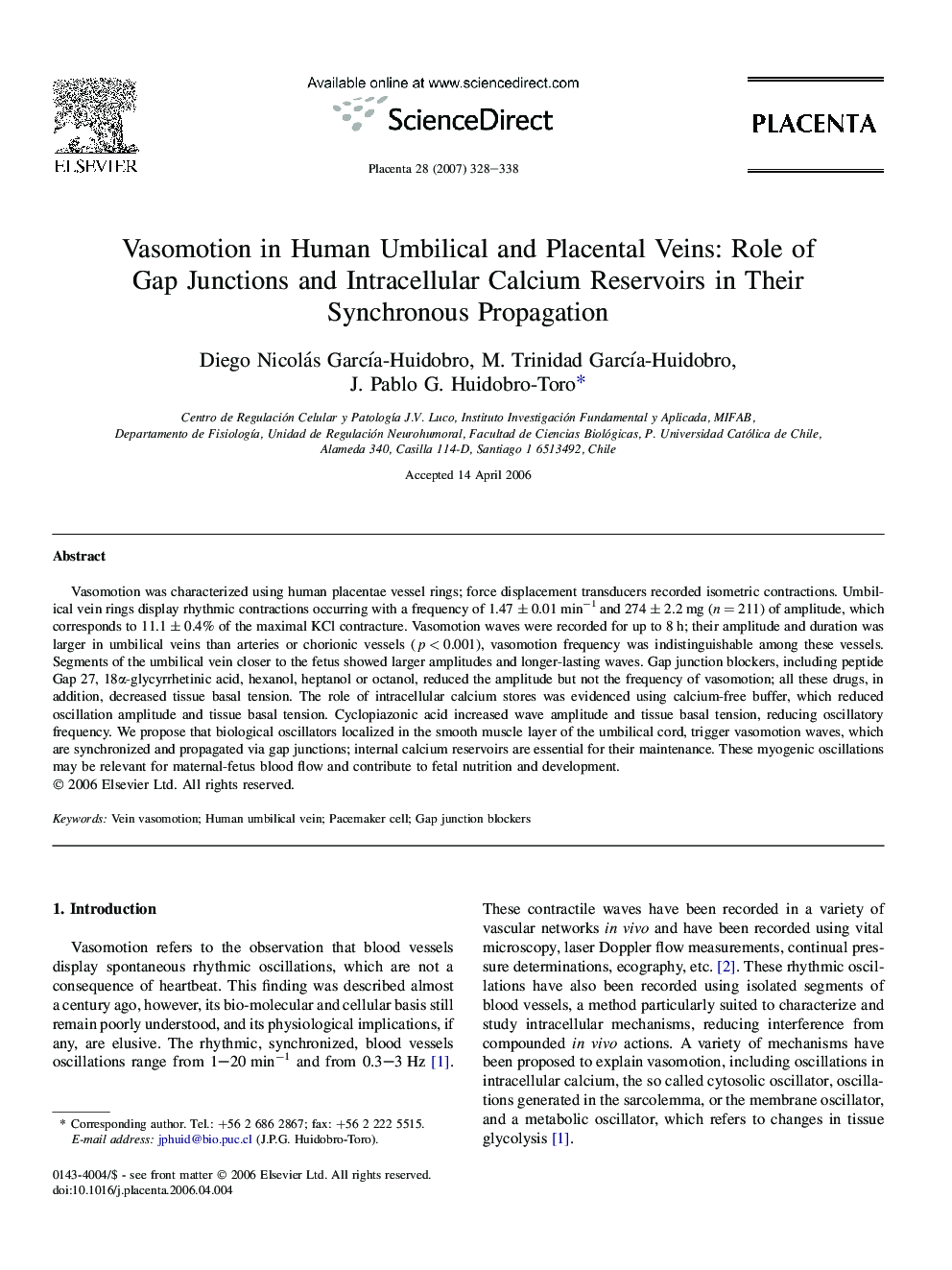| Article ID | Journal | Published Year | Pages | File Type |
|---|---|---|---|---|
| 2790126 | Placenta | 2007 | 11 Pages |
Vasomotion was characterized using human placentae vessel rings; force displacement transducers recorded isometric contractions. Umbilical vein rings display rhythmic contractions occurring with a frequency of 1.47 ± 0.01 min−1 and 274 ± 2.2 mg (n = 211) of amplitude, which corresponds to 11.1 ± 0.4% of the maximal KCl contracture. Vasomotion waves were recorded for up to 8 h; their amplitude and duration was larger in umbilical veins than arteries or chorionic vessels (p < 0.001), vasomotion frequency was indistinguishable among these vessels. Segments of the umbilical vein closer to the fetus showed larger amplitudes and longer-lasting waves. Gap junction blockers, including peptide Gap 27, 18α-glycyrrhetinic acid, hexanol, heptanol or octanol, reduced the amplitude but not the frequency of vasomotion; all these drugs, in addition, decreased tissue basal tension. The role of intracellular calcium stores was evidenced using calcium-free buffer, which reduced oscillation amplitude and tissue basal tension. Cyclopiazonic acid increased wave amplitude and tissue basal tension, reducing oscillatory frequency. We propose that biological oscillators localized in the smooth muscle layer of the umbilical cord, trigger vasomotion waves, which are synchronized and propagated via gap junctions; internal calcium reservoirs are essential for their maintenance. These myogenic oscillations may be relevant for maternal-fetus blood flow and contribute to fetal nutrition and development.
